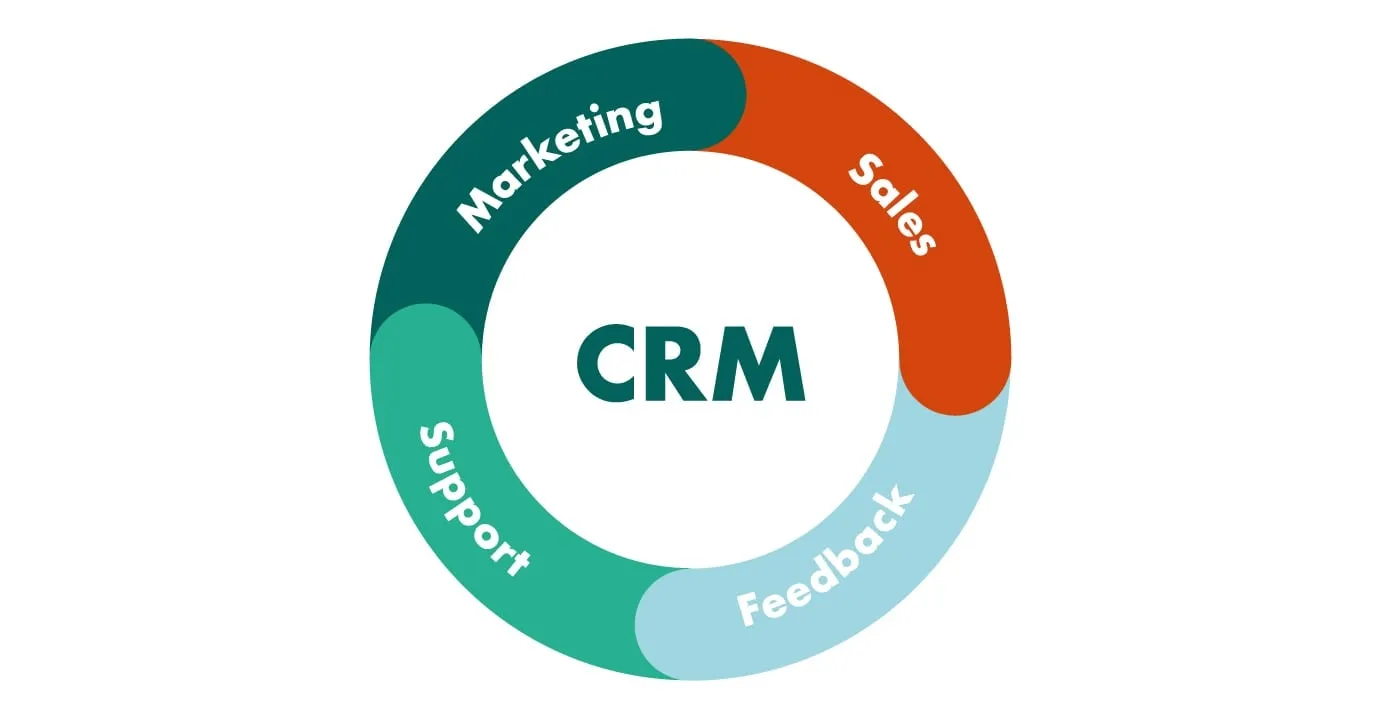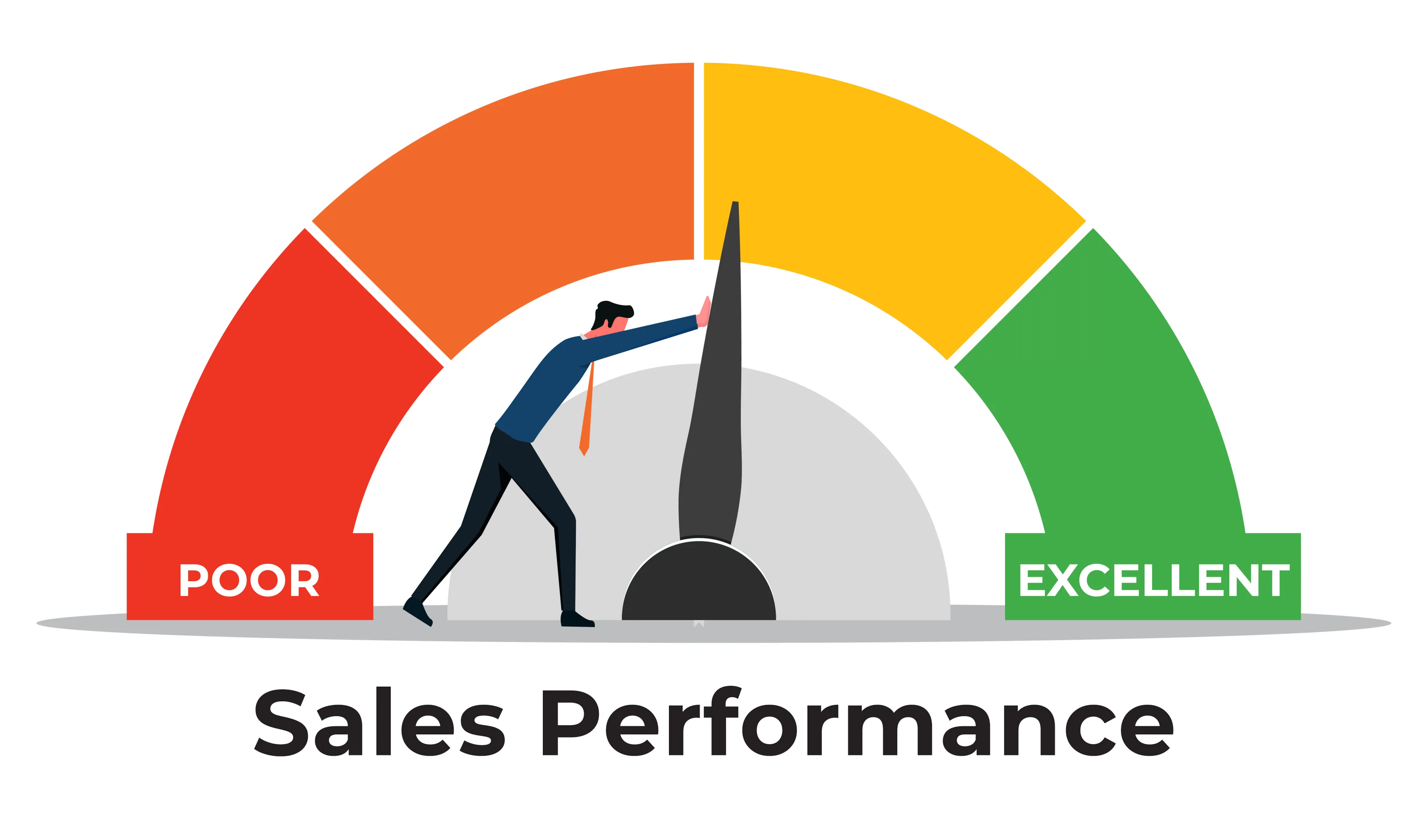A strong small business sales strategy helps you attract the right target customers and close more deals without guesswork. Businesses with a well-defined sales process see up to 28% higher revenue growth, according to Harvard Business Review.
Whether you're working with a small sales team or handling sales yourself, understanding your target market and building strong customer relationships can make all the difference. Using customer relationship management tools and refining your sales techniques will help you create a repeatable system for growth.
In this guide, you'll learn how to develop an effective sales strategy, track performance, and make informed decisions for long-term success.
Why Is It Important to Build a Sales Strategy?

A well-planned sales strategy helps businesses stay focused and reach their revenue targets efficiently. Without a structured approach, small businesses often struggle to attract potential customers and maintain long-term growth. Here’s why a strong sales strategy is essential:
1. Increases Sales and Revenue
A clear sales strategy plan allows businesses to identify target customers and create personalized sales approaches. Using direct sales and consultative selling, businesses can engage with prospective customers more effectively, leading to higher conversions and customer retention rates.
2. Defines Clear Business Goals
Without clear goals, sales efforts can be scattered and ineffective. A strong sales methodology helps businesses set realistic revenue targets and track performance. This ensures sales teams focus on strategies that attract existing customers and encourage repeat purchases.
3. Improves Sales Team Efficiency
A structured plan helps the sales department prioritize tasks, manage sales tools, and streamline processes. When sales representatives know their objectives, they can engage better with current customers and convert leads into paying clients.
4. Enhances Customer Relationship Management
A well-defined sales strategy integrates customer satisfaction and customer feedback into the process. This approach helps businesses understand what loyal customers expect and how to improve interactions, reducing customer churn.
5. Strengthens Market Position
Having a competitive edge requires businesses to analyze market research and adapt to industry trends. By using value-based selling and solution selling, businesses can differentiate their product or service and attract more right sales strategies.
6. Helps Identify Growth Opportunities
With insights from market feedback, businesses can find new ways to expand their sales channels and connect with a wider audience. Learning from more sales tips and leveraging marketing efforts can help improve sales and retain customers for long-term success.
A solid sales strategy isn’t just about making immediate sales, it’s about creating a sustainable approach that keeps existing customer base engaged and drives business growth.
How Can Your Sales Team Drive More Revenue?

A well-trained sales team follows a structured sales pipeline to close deals efficiently. Using a sales strategy plan, they can identify opportunities and engage with the right audience.
Leveraging customer data helps personalize pitches, while tracking the sales cycle ensures consistency.
Integrating social media platforms expands outreach, and a successful sales strategy keeps efforts aligned with business goals. Prioritizing cost savings and adopting a powerful sales strategy enhance long-term growth.
Staying updated on industry trends and using a competitive advantage help drive sales, while skilled sales professionals and proactive sales reps maintain customer trust.
10 Steps to Build a Winning Small Business Sales Strategy from Scratch

A winning sales strategy is essential for any business looking to grow steadily and maintain long-term success. Without a clear sales strategy plan, businesses may struggle with inconsistent revenue, poor lead conversion, and inefficient sales efforts.
A structured approach helps businesses generate leads, retain customers, and increase sales by making data-driven decisions.
Below, we break down 10 essential steps to help you build a small business sales strategy from the ground up.
1. Define Your Sales Goals
Clear sales goals give your business direction, ensuring that every effort contributes to measurable outcomes. Without specific targets, businesses risk making random decisions that don’t lead to sustainable growth. Setting objectives helps track progress, improve strategies, and keep the sales team motivated.
How to do it:
- Define short-term and long-term sales goals based on revenue and conversion targets.
- Set achievable, data-backed goals using insights from past sales trends.
- Monitor progress and adjust strategies as needed.
2. Identify Your Target Audience
Understanding your target audience allows you to focus on the right customers instead of wasting resources on unqualified leads. A strong market research strategy ensures that your marketing and sales teams focus on people who are likely to convert.
How to do it:
- Create customer personas based on demographics, preferences, and behavior.
- Use valuable insights from existing customers to refine your audience targeting.
- Track market feedback to identify patterns and adjust sales messaging.
3. Map Out Your Sales Funnel
A sales funnel outlines the steps a customer takes from initial interest to making a purchase. Having a structured funnel improves customer experience and helps identify weak points in the sales journey.
How to do it:
- Define each stage: awareness, interest, decision, and purchase.
- Analyze where potential buyers drop off and refine engagement strategies.
- Optimize the funnel using sales tools and automation.
4. Develop a Strong Value Proposition
A compelling value proposition clearly states why customers should choose your product or service over competitors. It helps businesses build trust and differentiate themselves.
How to do it:
- Identify your competitive advantage and highlight unique benefits.
- Ensure your value proposition is customer-centric, focusing on solving their problems.
- Align messaging across sales channels for consistency.
5. Choose the Right Sales Channels
Selecting the best sales channels ensures that you reach your target customers efficiently. Different businesses require different approaches, from direct sales to digital marketing.
How to do it:
- Analyze where your customers are most active (e.g., social media platforms, cold outreach, or referrals).
- Experiment with multiple marketing strategy approaches and refine based on performance.
- Align channels with your sales methodology to create a seamless customer journey.
6. Build and Train Your Sales Team
An effective sales team is the backbone of your strategy. Without proper training, even the best strategies won’t deliver the desired results. Investing in skill development ensures that your team can increase sales and maintain customer relationships effectively.
How to do it:
- Train sales reps on spin selling and consultative techniques.
- Develop standardized sales scripts that align with your great sales strategy.
- Encourage ongoing learning to adapt to industry trends and customer preferences.
7. Implement CRM Tools
A customer relationship management (CRM) system helps businesses manage customer interactions efficiently. It streamlines sales efforts, tracks communication, and improves follow-ups.
How to do it:
- Choose a CRM platform that integrates with your sales strategy plan.
- Train sales professionals to use CRM for tracking leads and customer engagement.
- Use CRM insights to improve sales messaging and retention strategies.
8. Create a Lead Generation Strategy
Consistently generating qualified leads is key to maintaining a healthy sales pipeline. Without a structured approach, businesses struggle to fill their funnel with high-converting prospects.
How to do it:
- Use generate leads strategies like content marketing, referrals, and paid advertising.
- Implement outbound selling through cold outreach and targeted prospecting.
- Track conversion rates and adjust tactics based on performance data.
9. Set Up a Follow-Up and Nurturing Process
Many businesses lose potential deals due to poor follow-ups. An effective nurturing process ensures that leads remain engaged and eventually convert into satisfied customers.
How to do it:
- Automate follow-up emails and reminders to maintain engagement.
- Personalize communication to match customer needs and interests.
- Train sales leaders to handle objections and build long-term relationships.
10. Measure, Analyze, and Optimize Performance
A winning sales strategy isn’t static—it evolves with market changes and customer behavior. Tracking performance ensures that your sales department can refine strategies and stay competitive.
How to do it:
- Measure key performance indicators (KPIs) like revenue, conversion rates, and sales cycle length.
- Use market feedback and customer insights to improve the strategy.
- Adjust your sales methodology based on real data, not assumptions.
Building a winning sales strategy takes planning, execution, and continuous refinement. By following these 10 steps, businesses can create a structured approach that helps attract, nurture, and convert target customers effectively. Investing in a strong sales team, leveraging customer data, and using the right sales channels ensures long-term success.A business that actively measures, analyzes, and optimizes its sales strategy will always have a competitive advantage over those that operate without a plan. By consistently refining your processes, you can ensure steady growth and a loyal existing customer base.
Who Is Your Ideal Customer and How Do You Identify Them?

Your ideal customer is someone who truly benefits from your product or service and is most likely to make a purchase. They have a genuine need for what you offer, align with your brand values, and are willing to pay for the solution you provide.
Understanding them helps create a winning sales strategy that increases conversions and strengthens customer relationships.
How to Identify Your Ideal Customer?
- Analyze Past Sales – Look at past sales data to find patterns in buyer behavior.
- Use Market Research – Study industry trends and competitor insights to understand potential demand.
- Segment Your Audience – Divide leads into groups based on demographics, interests, and challenges.
- Gather Customer Feedback – Listen to satisfied customers to understand why they chose your business.
- Monitor Sales Messaging Response – Track how different audience segments respond to your sales messaging and adjust accordingly.
- Engage in Inbound and Outbound Selling – Use both inbound selling (content marketing) and outbound selling (cold outreach) to gather insights.
- Refine Based on Valuable Insights – Constantly review market feedback to improve targeting and positioning.
By clearly defining and identifying your ideal customer, your sales team can focus on high-quality leads, improve conversion rates, and ensure long-term customer satisfaction.
What Role Does Customer Relationship Management Play in Sales?

A well-structured customer relationship management (CRM) system helps businesses organize customer interactions, track sales progress, and improve communication. It ensures that every lead and client receives timely follow-ups, making the sales process more efficient.
- Keeps Customer Information Organized – CRM stores contact details, preferences, and past interactions in one place.
- Improves Follow-Ups – Automated reminders help sales teams stay connected with leads and clients.
- Enhances Communication – Centralized data ensures that every team member has access to customer history, reducing miscommunication.
- Tracks Sales Performance – CRM tools generate reports that highlight trends and help refine strategies.
- Strengthens Customer Loyalty – Consistent engagement helps businesses build long-term relationships.
- Supports Decision-Making – Data-driven insights allow businesses to personalize offers and improve sales conversations.
Using a CRM system streamlines sales operations, ensuring no lead is lost and every customer receives the attention they need.
How Can You Track and Improve Your Sales Performance?

Tracking and improving sales performance ensures businesses make informed decisions and continuously refine their sales approach.
By monitoring key metrics and adjusting strategies, businesses can improve efficiency, close more deals, and maintain long-term customer relationships.
1. Define Key Sales Metrics
Sales metrics provide measurable insights into performance, helping businesses identify what’s working and what needs improvement.
- Identify critical metrics like revenue, average deal size, and sales cycle length.
- Track customer acquisition costs to assess profitability.
- Use benchmarks to compare current performance with industry standards.
2. Monitor Sales Team Performance
A strong sales team drives growth, but without monitoring, inefficiencies may go unnoticed.
- Track individual and team performance based on sales targets and quotas.
- Identify common challenges faced by sales reps and provide targeted support.
- Review call recordings and email interactions for quality improvement.
3. Use CRM for Tracking
A customer relationship management (CRM) system keeps customer data organized and helps track sales activities.
- Store customer interactions, purchase history, and follow-up schedules in one place.
- Automate task reminders to ensure no lead is forgotten.
- Generate reports to understand trends in customer behavior.
4. Analyze Conversion Rates
A high conversion rate indicates an effective sales strategy, while a low rate suggests areas for improvement.
- Measure the percentage of leads that turn into paying customers.
- Identify drop-off points in the sales process to make necessary adjustments.
- Test different sales approaches to see what resonates best with customers.
5. Measure Customer Engagement
Engaged customers are more likely to make repeat purchases and recommend your business to others.
- Track email open rates and responses to sales outreach.
- Monitor social media interactions and customer feedback.
- Assess customer support inquiries to understand common concerns.
6. Identify Sales Funnel Gaps
Understanding where leads drop off in the sales funnel helps businesses improve their conversion process.
- Analyze the number of leads progressing through each sales stage.
- Identify at which stage customers lose interest and adjust messaging accordingly.
- Offer additional touchpoints like follow-up emails or personalized outreach.
7. Leverage Sales Data and Reports
Data-driven decisions help refine sales strategies and optimize business growth.
- Use historical sales data to predict future trends.
- Identify seasonal patterns and adjust strategies accordingly.
- Compare sales performance across different products or services.
8. Review Performance Regularly
Consistently reviewing performance helps sales teams stay aligned with business goals.
- Conduct weekly or monthly performance reviews.
- Adjust sales targets based on recent trends.
- Encourage team discussions to share insights and challenges.
9. Refine Sales Strategies
Sales strategies need regular adjustments based on performance data and market changes.
- Test different pricing models or promotional strategies.
- Adapt messaging to align with customer pain points.
- Implement feedback from both customers and sales reps.
10. Train and Coach Continuously
Ongoing training ensures that the sales team remains skilled and adaptable to industry changes.
- Provide regular coaching sessions to enhance selling techniques.
- Keep the team updated with new sales tools and methodologies.
- Encourage peer mentoring to share best practices.
By tracking these key areas, businesses can refine their sales process, improve customer relationships, and increase overall efficiency.
What Common Sales Mistakes Do Small Businesses Make?

Many small businesses struggle with sales because they lack a structured approach. Simple mistakes can lead to lost revenue, poor customer relationships, and inefficient processes.
Understanding these mistakes and how to avoid them can help businesses improve their sales performance and build long-term success.
1. No Clear Sales Process
Without a defined sales process, businesses often struggle to convert leads into paying customers. A lack of structure can result in missed opportunities, inconsistent messaging, and confusion within the sales team.
How to Avoid It:
- Map out each stage of the sales process, from lead generation to closing deals.
- Standardize outreach methods to ensure consistent communication.
- Train the sales team on structured workflows and best practices.
2. Focusing Only on New Customers
Many businesses prioritize acquiring new customers while neglecting existing ones. This leads to missed opportunities for repeat sales and referrals. Retaining customers is often more cost-effective than constantly finding new ones.
How to Avoid It:
- Implement customer loyalty programs to encourage repeat purchases.
- Stay in touch with past buyers through personalized emails or offers.
- Provide excellent post-sale support to build long-term relationships.
3. Ignoring Customer Follow-Ups
Many sales opportunities are lost simply because businesses fail to follow up with potential customers. Leads often need multiple interactions before making a purchase decision.
How to Avoid It:
- Set reminders to follow up with leads after initial contact.
- Use a structured email sequence to keep prospects engaged.
- Personalize follow-ups to show customers they are valued.
4. Underestimating the Power of CRM
A customer relationship management (CRM) system allows businesses to manage interactions, enhance communication, and increase efficiency. Not using a CRM can lead to lost leads and missed follow-ups.
How to Avoid It:
- Choose a CRM that aligns with your business needs.
- Train the sales team on how to use CRM tools effectively.
- Regularly update customer records to keep information accurate.
5. Pricing Without Strategy
Setting prices too high or too low without proper research can hurt sales. If prices are too low, businesses risk losing profits. If they are too high, they may drive customers away.
How to Avoid It:
- Research competitors and industry trends before setting prices.
- Consider customer willingness to pay and perceived value.
- Test different pricing models to find the most effective strategy.
6. Neglecting Sales Data and Insights
Making sales decisions without analyzing data leads to wasted efforts. Businesses that ignore insights may miss key trends and patterns that could improve performance.
How to Avoid It:
- Track important sales metrics like conversion rates and customer behavior.
- Use reports to identify strengths and weaknesses in the sales strategy.
- Adjust strategies based on real data instead of assumptions.
7. Inconsistent Communication with Leads
Poor communication can confuse potential customers and weaken trust. A lack of follow-ups or mixed messages can make a business appear unreliable.
How to Avoid It:
- Develop a clear messaging strategy that aligns with business goals.
- Ensure all sales reps follow the same communication style.
- Use automation tools to maintain consistent messaging across channels.
By addressing these mistakes, small businesses can improve sales efficiency, build stronger customer relationships, and create a more structured approach to selling.
How to Scale Your Small Business Sales Strategy for Long-Term Success?

Scaling a sales strategy requires businesses to think beyond short-term growth. A strong foundation, adaptability, and efficient execution help businesses sustain long-term success.
Here’s how to expand sales operations while maintaining quality and customer satisfaction.
1. Refine and Expand Sales Channels
Relying on a single sales channel limits growth. Testing new approaches can open doors to untapped customer segments.
- Explore different outreach methods such as partnerships, referrals, and industry events.
- Leverage technology to automate repetitive tasks and free up time for relationship-building.
2. Develop a Scalable Sales Process
An adaptable sales process ensures efficiency as a business grows.
- Document workflows to maintain consistency as the team expands.
- Set clear performance benchmarks to track progress.
3. Strengthen Customer Retention Efforts
Loyal customers contribute significantly to revenue and brand reputation.
- Offer exclusive deals or early access to products for repeat buyers.
- Provide proactive customer support to address issues before they escalate.
4. Optimize Team Structure and Training
A growing business needs a well-structured sales team with clear roles.
- Assign specialized tasks to improve efficiency (e.g., lead generation, follow-ups, closing).
- Invest in ongoing training to keep the team informed about evolving sales techniques.
5. Use Data for Smarter Decisions
Scaling sales requires making informed choices based on real insights.
- Regularly assess trends in customer behavior to refine strategies.
- Adjust pricing, promotions, and engagement tactics based on performance reports.
By refining processes, diversifying sales efforts, and focusing on long-term relationships, businesses can create a scalable sales strategy that grows without losing quality.
Conclusion
Building a small business sales strategy takes time, but a structured approach makes it easier to grow and sustain success. Understanding your customers, refining your sales process, and making data-driven decisions help you stay ahead.
It’s not just about closing deals, it’s about creating lasting relationships that bring repeat business. Small changes, like improving follow-ups and exploring new sales channels, can make a big difference.
Keep refining your strategy, learn from customer feedback, and stay adaptable. The right approach ensures your business keeps growing without losing quality or direction. Now, it’s time to take action!

.webp)






